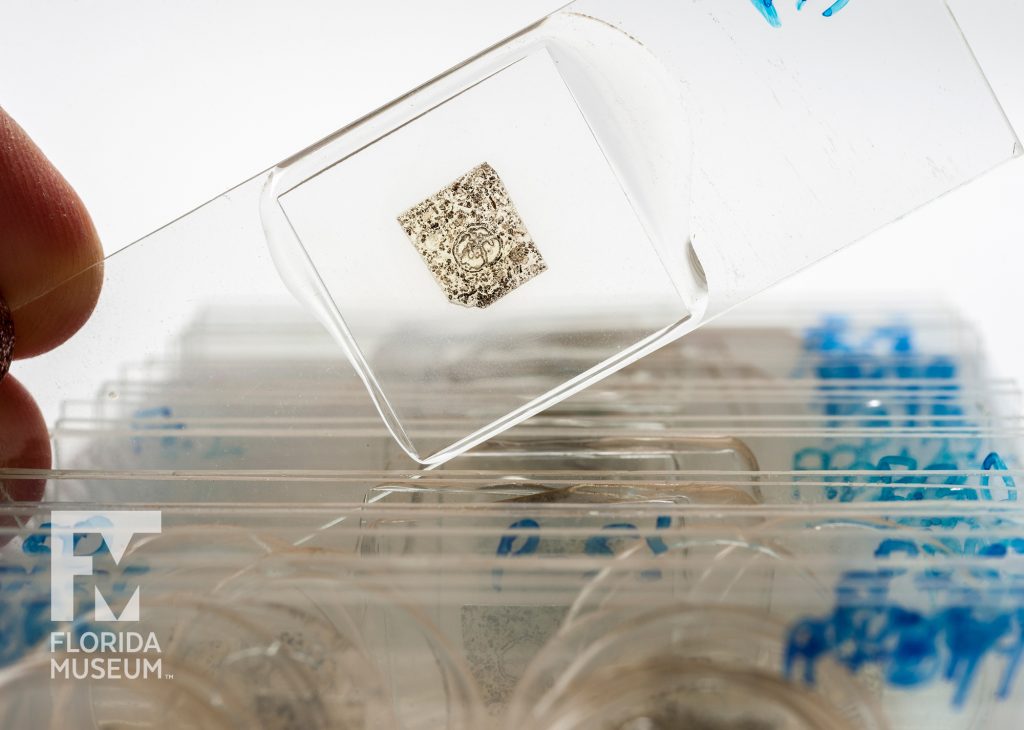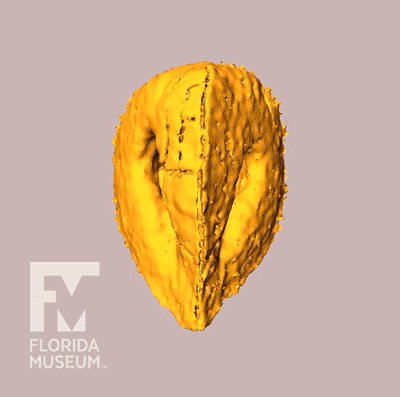Museum scientists discovered that fossil grape seeds from India are almost 10 million years older than those from Europe and North America. Researchers are using CT scans to learn more about the species and its past migrations between India and other continents.
Summary
World’s Oldest Grape Fossil (Indovitis chitaleyae)
From India
Lived ~66 million years ago (Cretaceous)
Collection
Story
Thinking about vintage grapes might conjure up images of fine wineries and vineyards of Europe, Australia or California, but few people realize that the oldest-known grapes were growing in central India long before any humans existed. These fossil grapes were dug from sediments that also contain fragments of dinosaur eggshells, indicating an age of about 66 million years.
I was amazed when I first identified these specimens at the details they still show. The fossil grapes, with their seeds still intact, were preserved in minerals that deposited in swampy sediments around the time of massive lava flows that erupted in India when that landmass was still an island far to the south of present-day Asia. Other fossils, such as palms and woods without growth rings from the same deposit, indicate an equatorial tropical climate.
The later collision of the Indian subcontinent with Eurasia, which caused the uplift of the Himalaya Mountains, may have introduced grapes to the Northern Hemisphere where they are known from numerous younger fossil seeds and of course many species still living today.
The seeds of grapes are very distinctive. Have a look the next time you eat a grape ‑ provided that it is not one of those inferior seedless grapes! The seeds are rounded triangular, with a pair of grooves on the front side and an oval ridge on the backside. These features allow us to identify fossils to the grape family, but slight differences lead us to interpret the India fossils to represent an extinct genus of the family.
Steve Manchester
Curator, Paleobotany
Florida Museum of Natural History
Additional Information
Read: World’s oldest-known grape fossils found in India
This scan explores the fossil:
Exhibit
On display Sept. 23, 2017-Jan. 7, 2018, Rare, Beautiful & Fascinating: 100 Years @FloridaMuseum celebrated the Museum’s rich history. Each Museum collection was asked to contribute its most interesting items and share the stories that make them special. Though the physical exhibit is closed, this companion website remains online, providing an opportunity to experience the Florida Museum’s most treasured specimens.
Exhibit Area: Looking Ahead
Theme: Digital Data
 Want to see more? Explore more than 300 breathtaking color photos of plants, animals, fossils and cultural heritage materials from the Florida Museum of Natural History’s collections in the award-winning book All Things Beautiful available from the University Press of Florida.
Want to see more? Explore more than 300 breathtaking color photos of plants, animals, fossils and cultural heritage materials from the Florida Museum of Natural History’s collections in the award-winning book All Things Beautiful available from the University Press of Florida.
*This title was accurate at the time the exhibit was on display in 2017. Please visit the collection website to verify current staff and student information.


